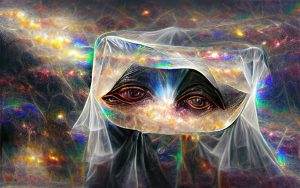French children’s show ‘Miraculous Ladybug’ has quickly gained popularity in the U.S.
Miraculous Ladybug. The Tales of Ladybug and Chat Noir have been around since 2015, but has just now started to gain massive popularity among teenagers and children. The show's many captivations include the thrilling love square, the creative villains, and the action-packed scenes.
May 7, 2021
All the way back in 2017, Netflix appeared with a French-Japanese-Korean animated television series for children ages six to twelve called “Miraculous Ladybug.” Virtually unheard of in the United States before this year, the show portrays the “ordinary” life of Marinette Dupain-Cheng who resides in Paris, France who has a huge secret–she’s a superhero who goes by the name Ladybug. Alongside her is Ladybug’s partner, Chat Noir, who is secretly the famous supermodel Adrien Agreste, who also happens to be Marinette’s crush and is in love with Ladybug. The love square between Marinette, Ladybug (voiced in English by Cristina Vee), Adrien and Chat Noir (voiced in English by Bryce Papenbrook) is one of the many captivating aspects to the show because of the anticipation of the truth being revealed that they’re the same person as their alter-egos.
To become their alter-egos, Marinette and Adrien use their Miraculous (in the form of an accessory) that grants them immortal creatures called kwamis that give them their power and indestructible suits. Ladybug’s kwami, Tikki (voiced in English by Mela Lee), grants her the power of creation and Chat Noir’s kwami, Plagg (voiced in English by Max Mittelman), grants the power of destruction. Together, they balance each other out and if the two miraculouses were to be merged, the one with both of them could ask for any wish to be granted. But this wish comes with consequences that cannot be reversed, which makes the merging of Ladybug’s earrings (her miraculous) and Chat Noir’s ring (his miraculous) dangerous if put in the wrong hands.
Ladybug and Chat Noir’s mission is to find and defeat super-villain Hawkmoth and take his miraculous (a brooch) that he uses to “akumatize” (also known as evilize) people who have negative emotions and turn them into villains. Hawkmoth, time and time again, continuously tries to achieve his one desired outcome of his evildoing; to take Ladybug and Chat Noir’s miraculous to bring back his deceased wife.
While the plot is meant for children, it’s received a huge amount of recognition among teenagers. The portrayal of an independent and strong woman as the main heroine is a large reason for people’s watching, and probably the most popular reason is because of the famous love square between Adrien/Chat Noir and Marinette/Ladybug. Having now three seasons with the fourth releasing in the United States in summer 2021, fans have eagerly waited for the two to get together and have complained of the repetition in all seasons.
One of the downsides of Miraculous Ladybug is the lack of differentiation in episodes. Every episode is just like the last except only with a different akumatized person, but other than that it always goes the same way; Marinette and Adrien as their civilian selves, someone gets akumatized because they feel hopeless, Ladybug and Chat Noir fight the villain and deakumatize them, and then back to Marinette and Adrien. The only episodes that are somewhat different are the Origins episodes in season 1 and “Chat Blanc” and “Oblivio.”
Overall, however, Miraculous Ladybug presents impressive character dynamic that some younger audiences wouldn’t be able to notice, and the show even has special TV movies “Miraculous World: New York — United Heroez,” “A Christmas Special: Miraculous,” and the recently released “Miraculous World: Shanghai — The Legend of Ladydragon.” The captivating love square, exciting specials, and overall plot of Miraculous Ladybug all connects to the growing popularity and fan base of the show, and does a good job at maintaining subtle character development that makes watchers pay close attention to what’s going on.




